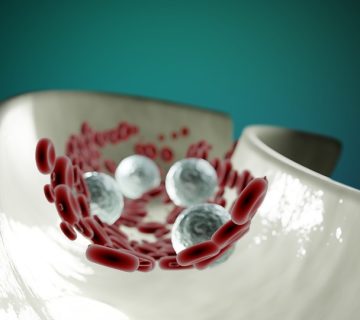Deep Vein Thrombosis (DVT) is a medical disorder in which a blood clot develops in a vein, usually in the leg. This can lead to serious health complications if not treated promptly. DVT is a silent killer and affects millions of people globally, making it crucial to understand what it is, its symptoms, its causes, and most importantly, how to prevent it.
In this blog, our vascular specialists will look in-depth at everything you need to know about DVT and how to keep yourself and your loved ones safe.
What Is Deep Vein Thrombosis (DVT)?
DVT is blood clotting that forms in a deep vein. It’s usually formed in the legs but can also be formed in the hands. It can lead to pain, swelling, and redness in the affected area. The blood clot can break off and travel to other body parts, such as the lungs, which can be life-threatening. It’s known as a pulmonary embolism (PE).
Symptoms Of Deep Vein Thrombosis
The symptoms of DVT can vary from person to person. Some of the common symptoms include:
- A heavy ache or pain in the affected leg
- Swelling in the leg
- Redness and warmth
- Tenderness
It would help if you remembered that there are instances where you might not even experience any of these symptoms.
Causes Of Deep Vein Thrombosis
Several factors can increase your risk of developing DVT, including:
- Prolonged immobility, such as sitting for longer hours
- Aging
- Cancer
- Family history of DVT
- Smoking
- Obesity
- Hormonal imbalances (e.g., use of hormonal therapy)
- Certain medical conditions (e.g., autoimmune diseases, heart disease, and stroke)
Prevention Of Deep Vein Thrombosis
Various steps you can take to decrease your risk of developing DVT include the following:
- Maintaining a healthy weight
- Staying active and exercising regularly
- Wearing compression stockings
- Drinking plenty of water and staying hydrated
- Avoiding smoking

Diagnosis And Treatment Of Deep Vein Thrombosis
If you suspect you may have DVT, it’s important to seek medical attention from a vascular specialist as soon as possible. They’ll perform a physical examination and may order tests, such as an ultrasound, to diagnose the condition.
Treatment for DVT usually involves taking blood thinners to stop the clot from getting larger and to reduce the risk of PE.
At RJIR Vascular & Oncology, our team of vascular specialists is dedicated to providing you with the best possible care and treatment for DVT and other related conditions. We use minimally invasive procedures to treat various health problems.
In addition, we also treat varicose veins, enlarged prostate, overactive bladder, and more.
Have more questions? Reach out to us today.





